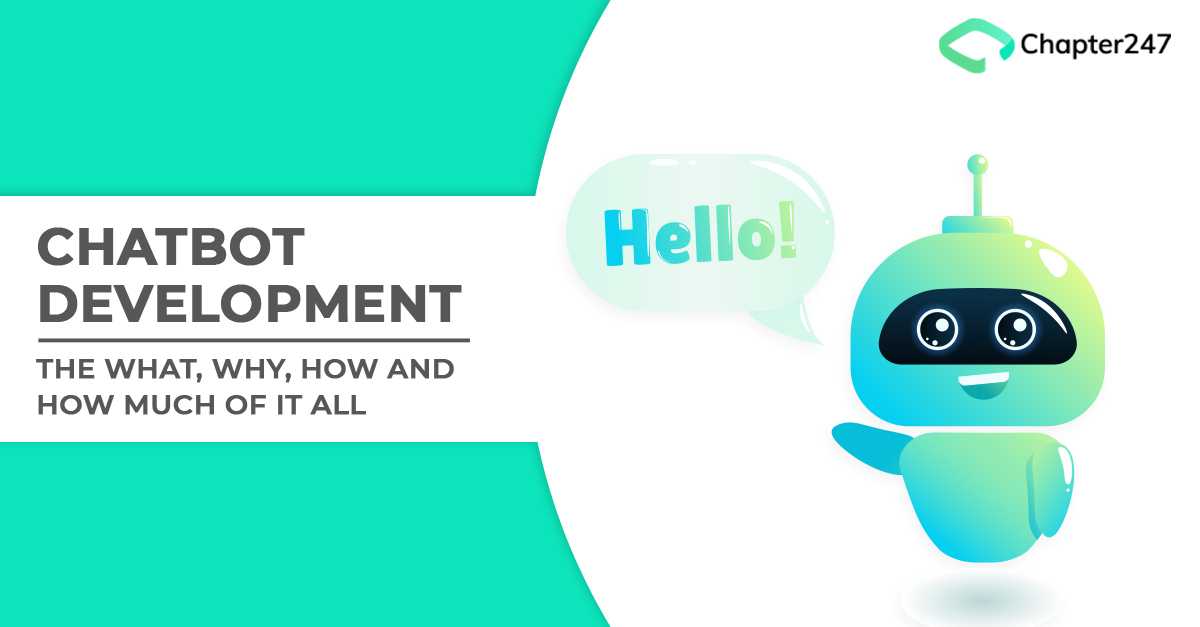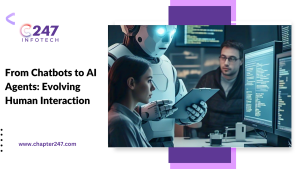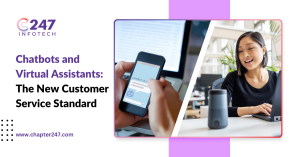Did you know that 50% of customers across verticals assume that businesses are open 24*7? But are they?
Regardless of whether businesses are open all the time, this is the expectation of today’s customers. This is probably why 80% of companies had decided to integrate some form of chatbot system by 2021.
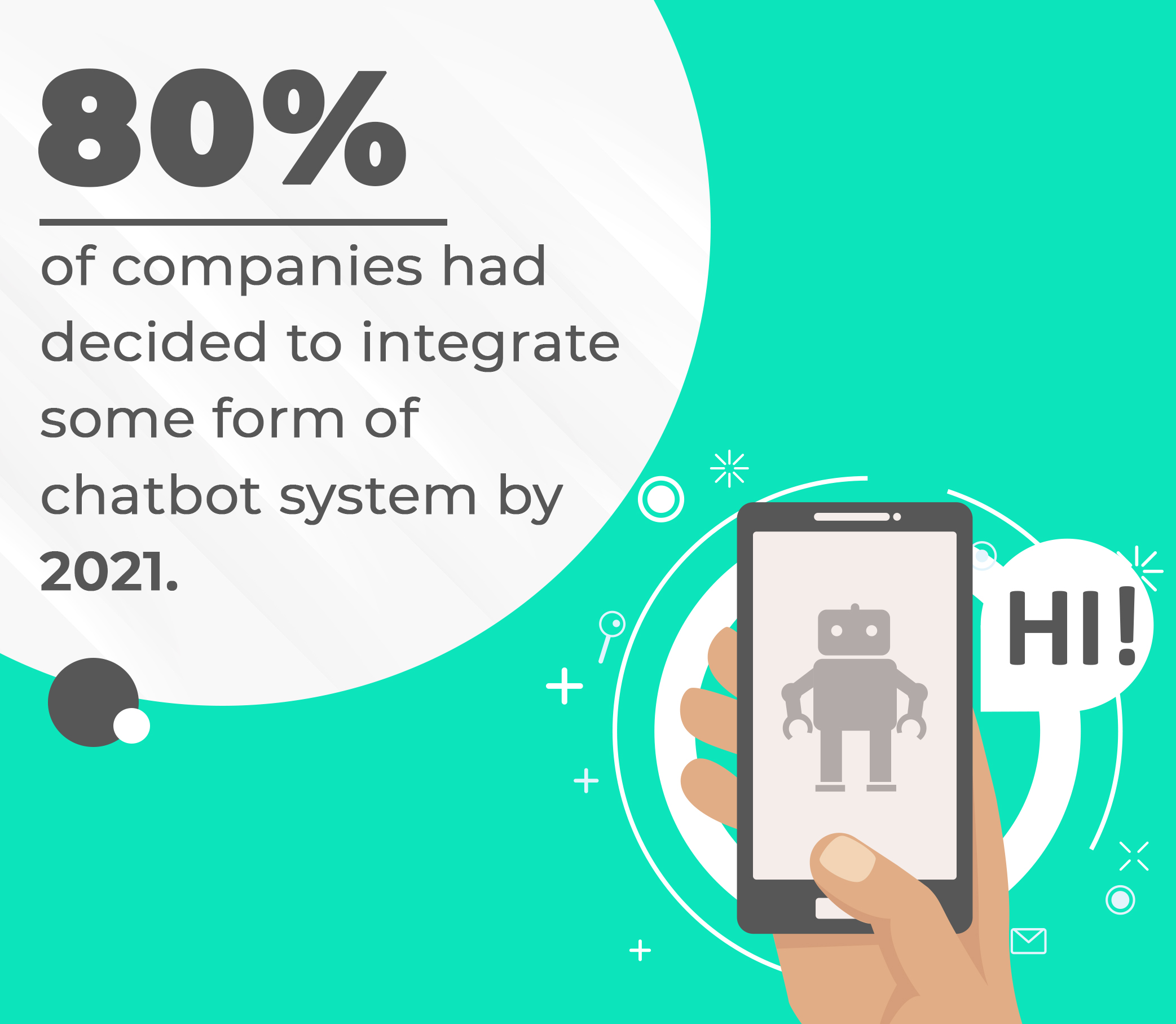
Chatbots today enable businesses to remain open at all times. They act as personalized customer support systems that answer queries, resolve issues and keep customers happy. Now, who doesn’t want that?
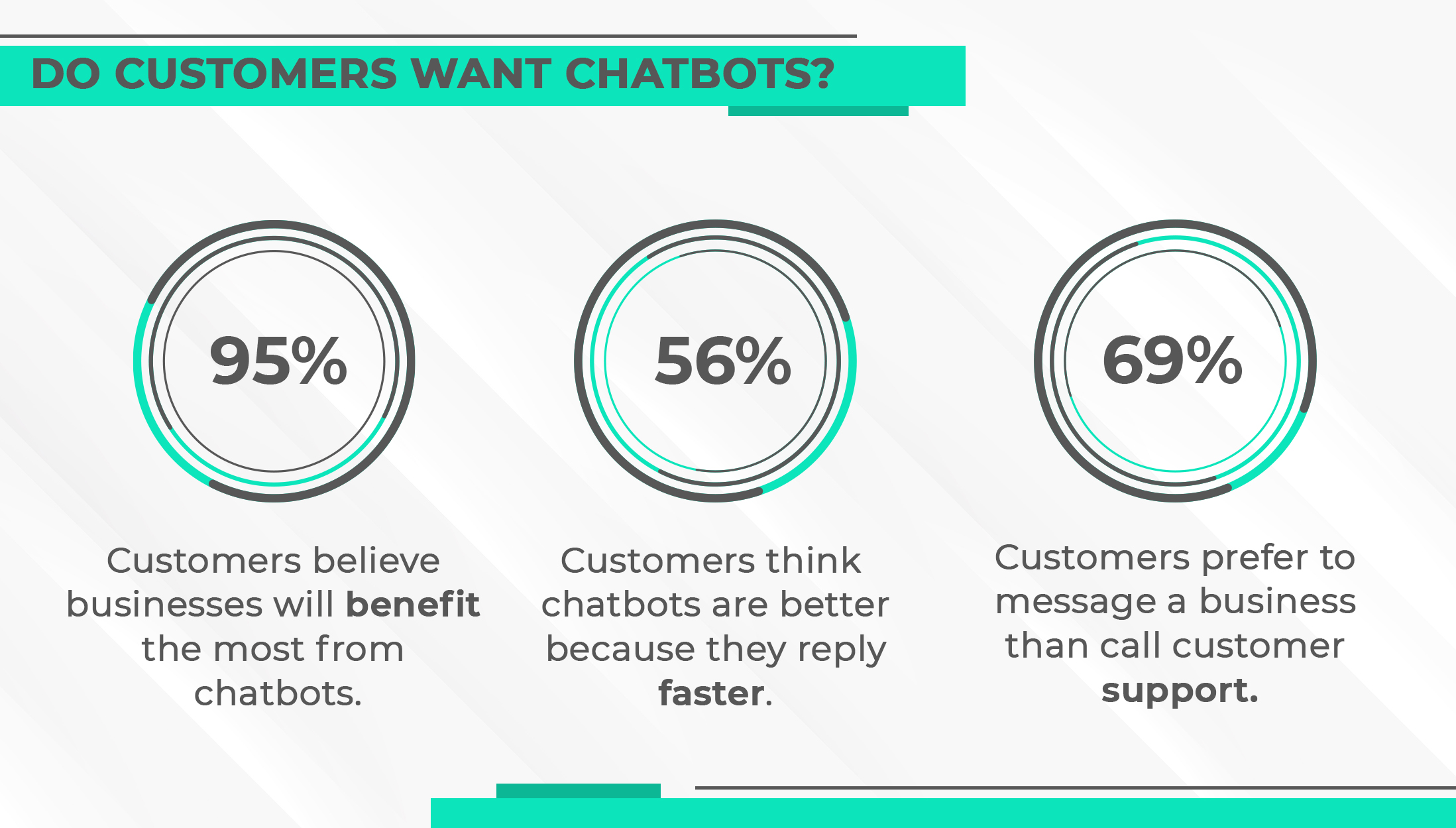 Industries benefiting the most from chatbots –
Industries benefiting the most from chatbots –
- Travel
- Finance
- Healthcare
- Real estate
- Education
How do chatbots benefit businesses?
The purpose of chatbot development is to decrease operations cost and increase customer support and its efficiency. So that is indeed the most significant advantage of chatbots.
Here’s a low-down on the various benefits of chatbot development:
# Reduction of labor expenses
Every business has a support staff that needs to address the problems or challenges of its customers regularly. Automating these services has become crucial because human personnel cost more while they cannot practically assist customers by the clock. Chatbots can engage with more than one person at a time that multiplies their efficiency in much less cost than human staff.
# Reduction in operational costs
Business operations involve interacting with customers over phone calls while also dealing with customer attribution in case of inefficiency or inability to solve problems. This further increases the overall operational costs. Chatbots curtail this cost while enabling customer retention.
Take for instance insurance provider Lemonade has a policy chatbot called Maya who onboards customers in 90 seconds as against 10 minutes taken by a person. Its claims chatbot Jim settles claims within seconds as against 48 hours taken by human staff.
# Customer support delight
A clear advantage of using chatbots for customer support, retention and handling is that customers feel your business is available around the clock. This leads to better customer experiences and increased numbers of satisfied customers. Marriott International’s ChatBotlr works through Facebook Messenger. At least 44% of its customers reported being satisfied with getting assistance related to their stay through the bot.
# Better business efficiency
When staff and customer representatives are free from mundane phone calls and usual queries, they can be more creative. Customer experience executives can be used for devising strategies for customer acquisition and converting more leads. Sometimes, chatbots are created to generate sales leads. For instance, chatbot developers at Chapter 247 created a lead generation chatbot for a UK-based business that helped other companies generate quality leads.
# Analytics for informed decisions
An added advantage of installing chatbots is the analytics and insights they provide help in improving your service or product. For instance, if a chatbot is installed on your website, it can provide insights into the customer’s mind about the website, find out reasons for bounce rates or why customers do not purchase.
Types of chatbots
Chatbots can be divided into two broad categories:
1] The Supersets
2] The Subsets
The Supersets
This broadly categorizes all kinds of chatbots into two heads:
1] Bots within apps: These are installed within a mobile application and help customers navigate smoothly through the app’s different features.
2] Bots within messenger: Today, apps like Linked-in and Facebook have bots that help people navigate chats with other people. Similarly, businesses also can get bots installed within messengers of their social media pages.
The Subsets
Since chatbot development is evolving every day, there can practically be any chatbot today. However, below are some popular uses where chatbots are put to work:
1] Conversational chatbots: Those used on existing social messengers are often the conversational chatbots whose job is to address a human customer while a support executive arrives. Food delivery apps such as Swiggy or Zomato or Taxi hailing services such as Uber often use such chatbots to engage customers.
2] Transactional chatbots: Their job is to assist customers in making a purchase within the app.
3] FAQ chatbots: They provide intuitive and evolving answers to actual customers’ most predictable and common questions. Their responses appear human and evolve as the conversation progresses.
4] Predictive chatbots: These are the most advanced chatbots that evolve with customers’ responses and can analyze the users’ reactions or feelings based on their responses.
What are the standard features needed in chatbot development?
When you consider developing a chatbot for your business, it is important to know the bot’s purpose. Each chatbot and its features will largely depend upon the goals that need to be achieved. However, there are some features that most chatbots must have:
Backend setup
Chatbot functions like an evolving application. It needs a backend setup to hold business logic and integration within the current systems. The backend will manage messages coming from different channels and process them with NLP offerings such as LUIS, Api.ai, or Wit.ai.
Channels
A chatbot will need channels so the endpoints can be integrated. While each channel integration is usually different, each follows the same method of endpoint integration in the backend for managing messages that rely on token access. Developers will need to implement the channel-specific user interface in touchpoints such as graphic cards, quick reply etc, for helping users during a chat.
NLP services
These services are why chatbots are so evolving and intelligent. Standard NLP services such as API.ai, Wit.ai or LUIS are needed for extracting the intents from the user message. Apart from setting up of NLP service with the help of SDK, the NLP entities need to be trained. This is no easy task for developers.
Development of conversational intelligence
Another complicated stage of chatbot development is designing intelligent conversations based on the NLP entities and intents. This means developing an algorithm for every single discussion and navigation so users can start from anywhere and yet the response comes as relevant to them. This involves the use of decision trees, state workflows, algos or other deep learning methods.
Integration into the application
Most chatbots are created to be integrated in a web or mobile application. This is because they assist customers in buying products, solving challenges, or navigating through the application. So the integration of the chatbot into the application is the last stage.
How much does chatbot development cost?
Approximately, the chatbot development comes in the range of $25,000 and $30,000. This includes the design, development and integration part of the entire chatbot development framework.
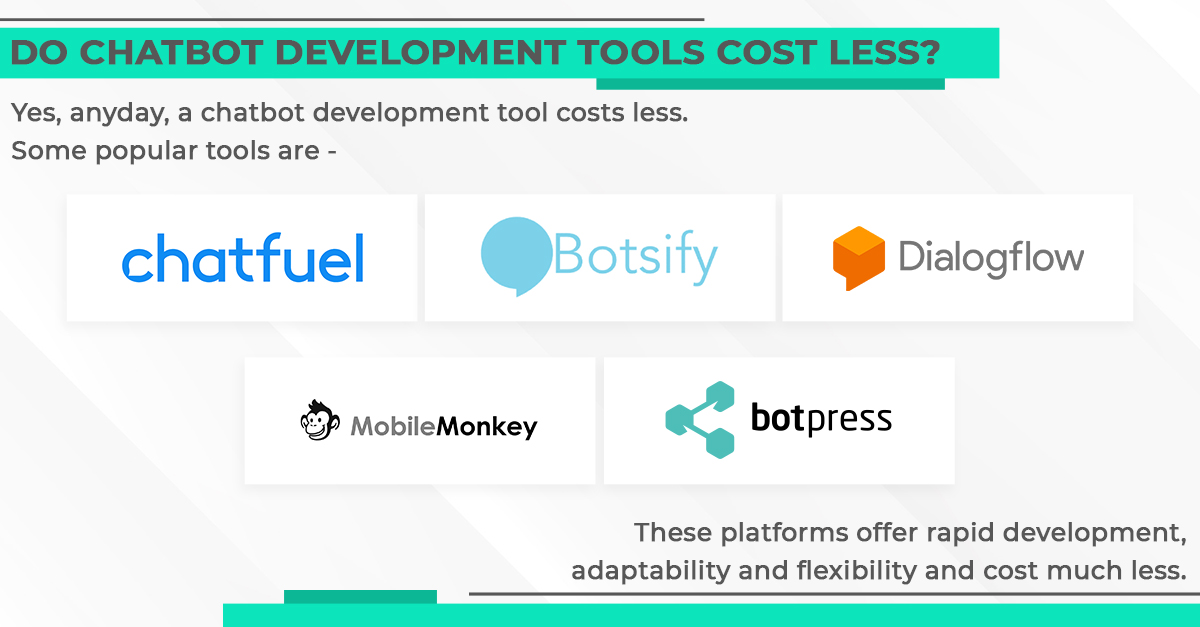 Do chatbot development tools cost less?
Do chatbot development tools cost less?
Yes, anyday, a chatbot development tool costs less. Some popular tools are –
- Chatfuel
- Botsify
- Dialogflow
- Botpress
- Mobile Monkey
These platforms offer rapid development, adaptability and flexibility and cost much less.
Whichever path you choose, it’s essential to determine the purpose behind chatbot development. The investment in chatbots initially may feel expensive but it usually leads to a solid return. Chapter 247 has hands-on experience of creating intelligent chatbots for businesses across the globe. We have a team of developers that understands chatbots’ efficacy and has delighted many companies with their agile development. If you are in such a business, we should talk.


